The Power & The Glory
A Lake Superior thunderstorm can be a thing of beauty, from afar. In a small boat in a big storm, well, an entirely different word comes to mind.
At any given moment, meteorologists say, there are 1,800 thunderstorms raging across our planet; as many as 44,000 have been recorded in a single day around the globe. A large thunderstorm is capable of releasing 125 million gallons of water at 8.34 pounds to the gallon slamming to earth from tens of thousands of feet in the sky. The potential energy involved in a big storm is almost incomprehensible: in just one minute, a severe cloudburst can release a force equivalent to a 120-kiloton bomb.
That’s a lot of numbers but as I idle the Little Dipper north of Hermit Island inspecting the sky, there is only one number that I am concerned with at the moment: one, the number of thunderstorms barreling down the channel right now and heading directly at me.
While our visions of paradise are usually capped off with a peaceful patch of blue sky and dotted with puffy white clouds, our darker moments are a witches cauldron of backlit stormclouds, swords of lightning, swirling winds, and dread.
Thunderstorms can be the stuff of nightmares — Frankenstein’s monster lurching to life at the crack of a lightning bolt, the trio of witches in Shakespeare’s Macbeth cackling “When shall we three meet again, in thunder, lightning, or in rain?” We deify storms as a way to comprehend their power and contrive some false but comforting sense of control over what, in reality, lies completely outside of our control.
But sometimes, too, if we are willing to admit it to ourselves, there is something more swirling inside of us as the first of the stormclouds blot out the sun in front of us, something tinged with at least the glimmering edges of excitement and beauty.
To see stormclouds gathering brings the same intermingling of fear and wonder as watching a pack of wolves move slowly towards you on the horizon, or the thunderous realization of suddenly seeing a bear materialize from the shadows in the forest. A dark cloud, the smell of rain, a gust of wind, touches something unnameable within us and gets at the core of why many of us go into wild places to begin with.
We run rapids, climb cliff faces, or even venture out on the expanse of Lake Superior to put ourselves among the powers that move in the world. Storms add a new and unpredictable edge to even familiar places. The glass-smooth waters of the channel we were traveling up just a few moments ago suddenly go dark, the color of a bruise, the edges of the waves sharpened like sawteeth.
Human physiology can explain some of it: in wild weather, the human body reacts like a sounding board to the sudden drop in air pressure and changes in humidty and temperature with corresponding fluctuations in heart rate, respiration, and blood pressure. It also raises adrenaline. One study found that simulating storm conditions including wet, damp air and 25 mile-an-hour wind gusts supercharged athletic performance, enhancing reaction time, endurance, and a sense of balance. We come alive in storm conditions.
Birds fly lower to find pockets of higher pressure. Sound waves bounce off the low cloud ceiling giving noises a hollow ring to our ears; odors waft up in the lower pressure so that we can literally smell the rain coming. The very air can seem coiled, poised to spring, to pounce, unleashing the power and the glory both.
But not all the answers lie in science. On a day in 1874, John Muir heard a storm approaching in Yosemite. While most people in those circumstances seek shelter, Muir embraced it. “When I heard the storm, I made haste to join it,” he wrote, “for in storms nature has always something extra fine to show us.” He sought out the windiest ridge and there climbed a 100-foot Douglas fir, riding for hours the swaying tree “like a bobolink on a reed.” While others huddled in the safety of the indoors, Muir reveled in the wildness, taking it all in, letting the storm revive and renew him. “The winds will blow their freshness into you,” he wrote, “and the storms their energy.”
That energy Muir spoke of has little or nothing to do with amperes or degrees Fahrenheit. His defiant act to venture out in what he called “one of the most bracing wind-storms conceivable” to climb while others were seeking shelter was no scientific experiement like Ben Franklin and his fabled kite. It was the act of a poet and dreamer seeking the kind of communion with nature not possible in calm, clear moments, but found only and most purely at the heart of a storm, and it changed his view of that wild place. “[N]ever before,” he wrote, “did these noble woods appear so fresh, so joyous, so immortal.”
All of that - from Macbeth to meterology and Muir - swirls in my head stunning me to stillness until I hear the first splatter of rain smack into the windshield and feel the first cold fingers of wind wrapping around the open neck of my unzipped rainjacket. Like a slap in the face, I realize the storm is not going to miss us. We are not going to skirt the edges. It is here and we will be, for better or worse, right in its path. I am suddenly fully and utterly awake. With a surge of adrenaline coursing in my veins like a crack of lightning, I batten down the hatches, zip my raingear, spin the bow of the Little Dipper, and throttle up, ready for whatever power or glory lies at the dark heart of the approaching storm now fully embracing the islands, and us, as we run for a lee.
— Jeff Rennicke (all photography by the author unless otherwise noted).





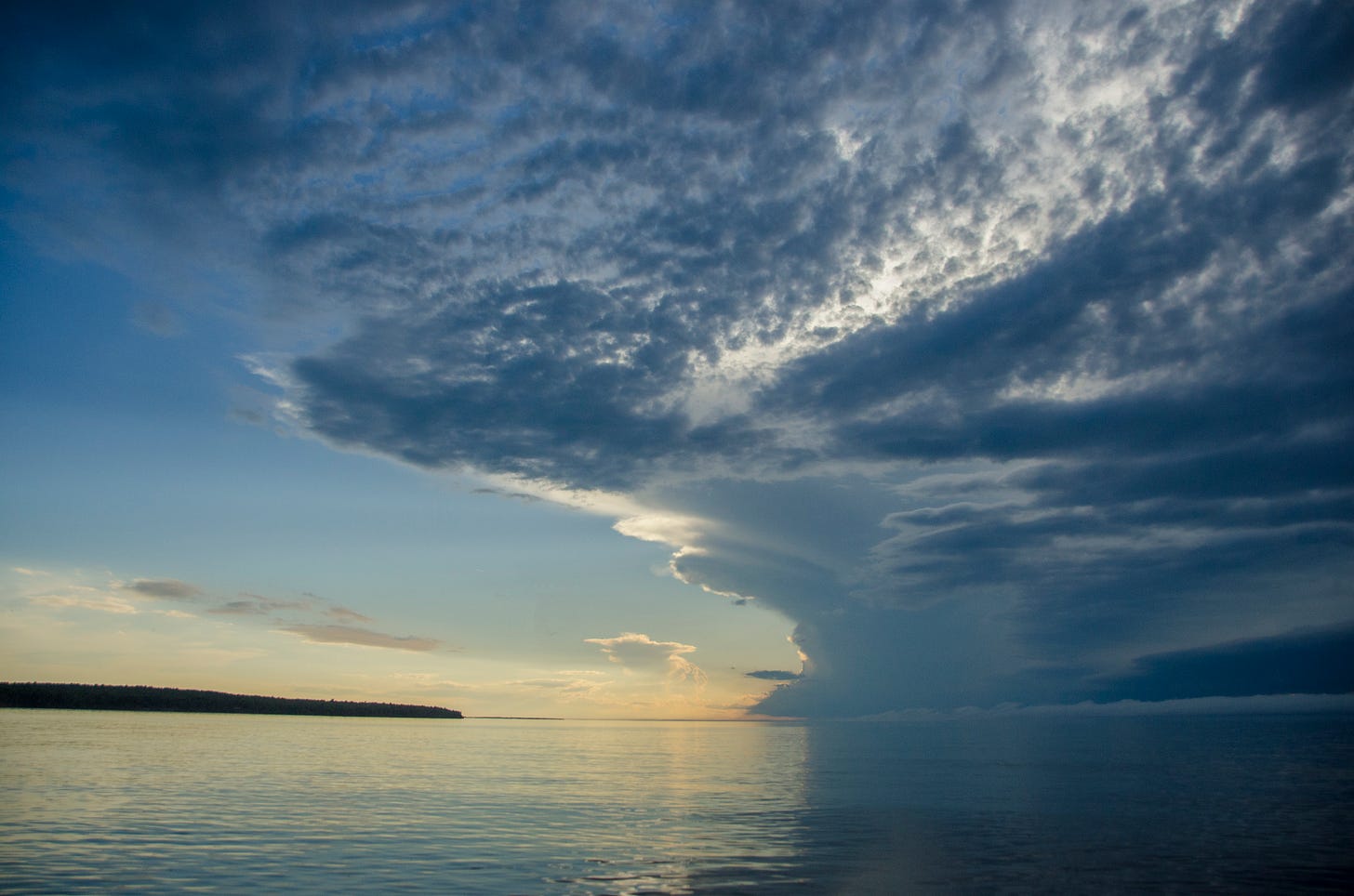
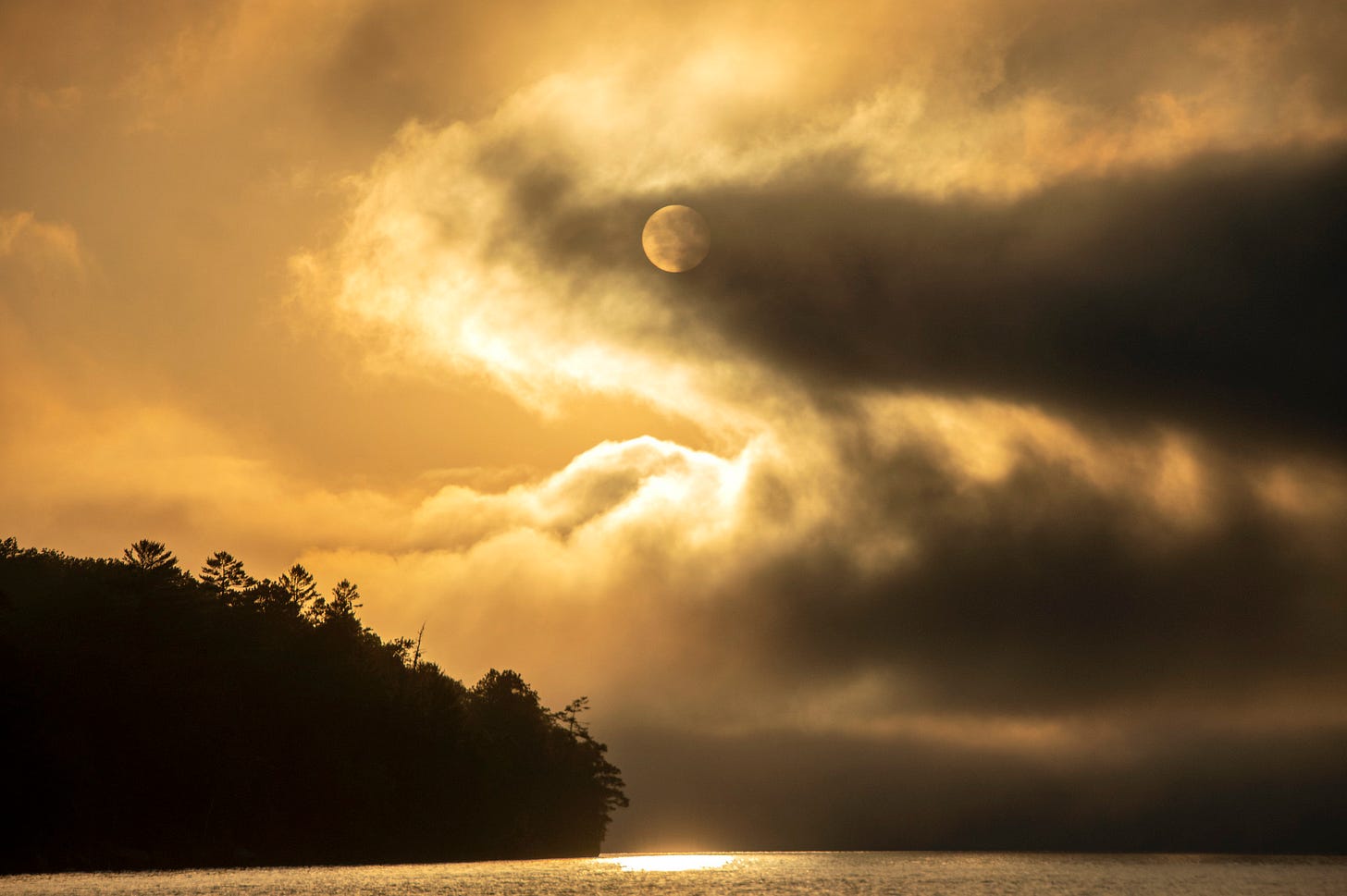
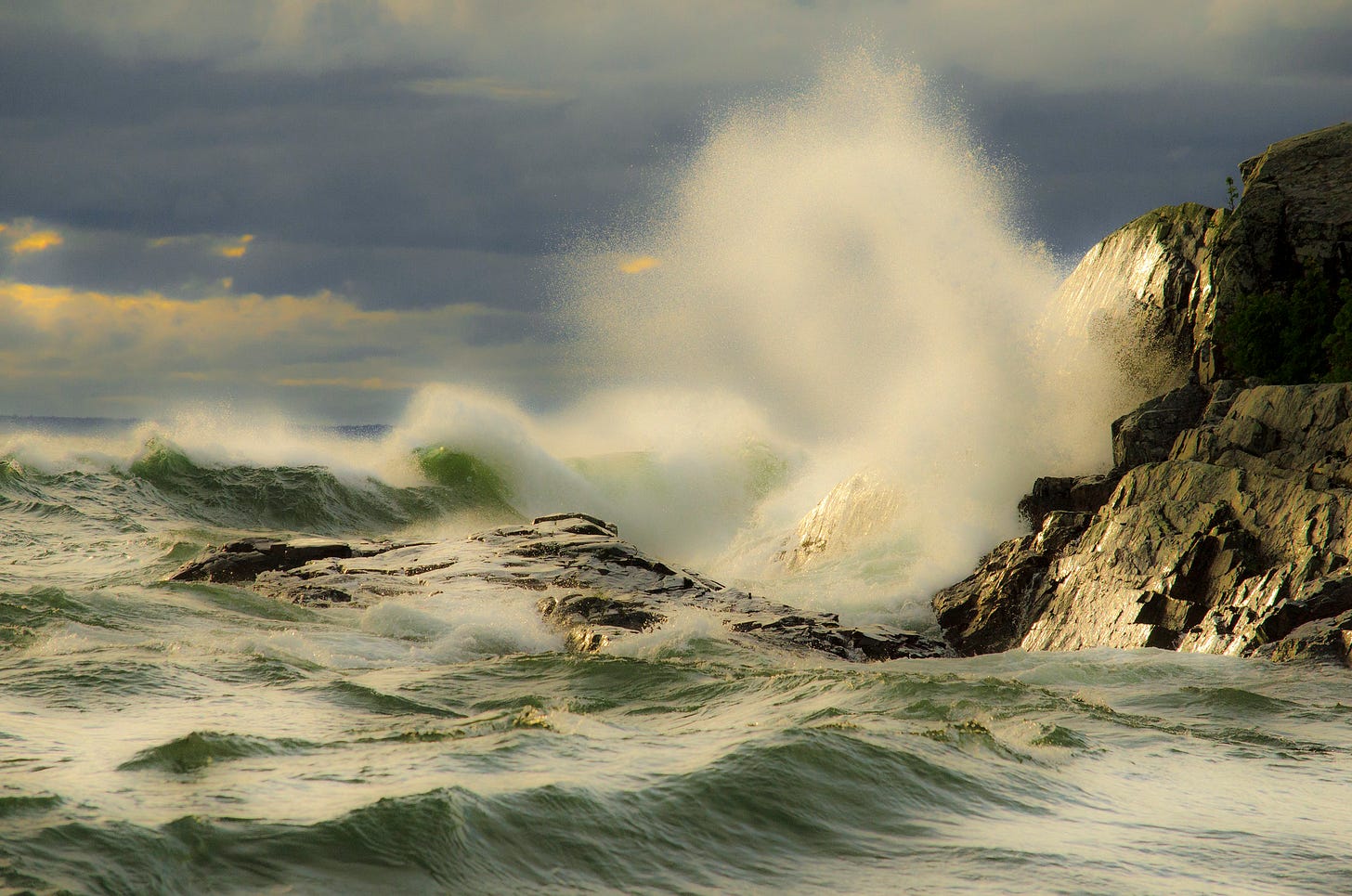
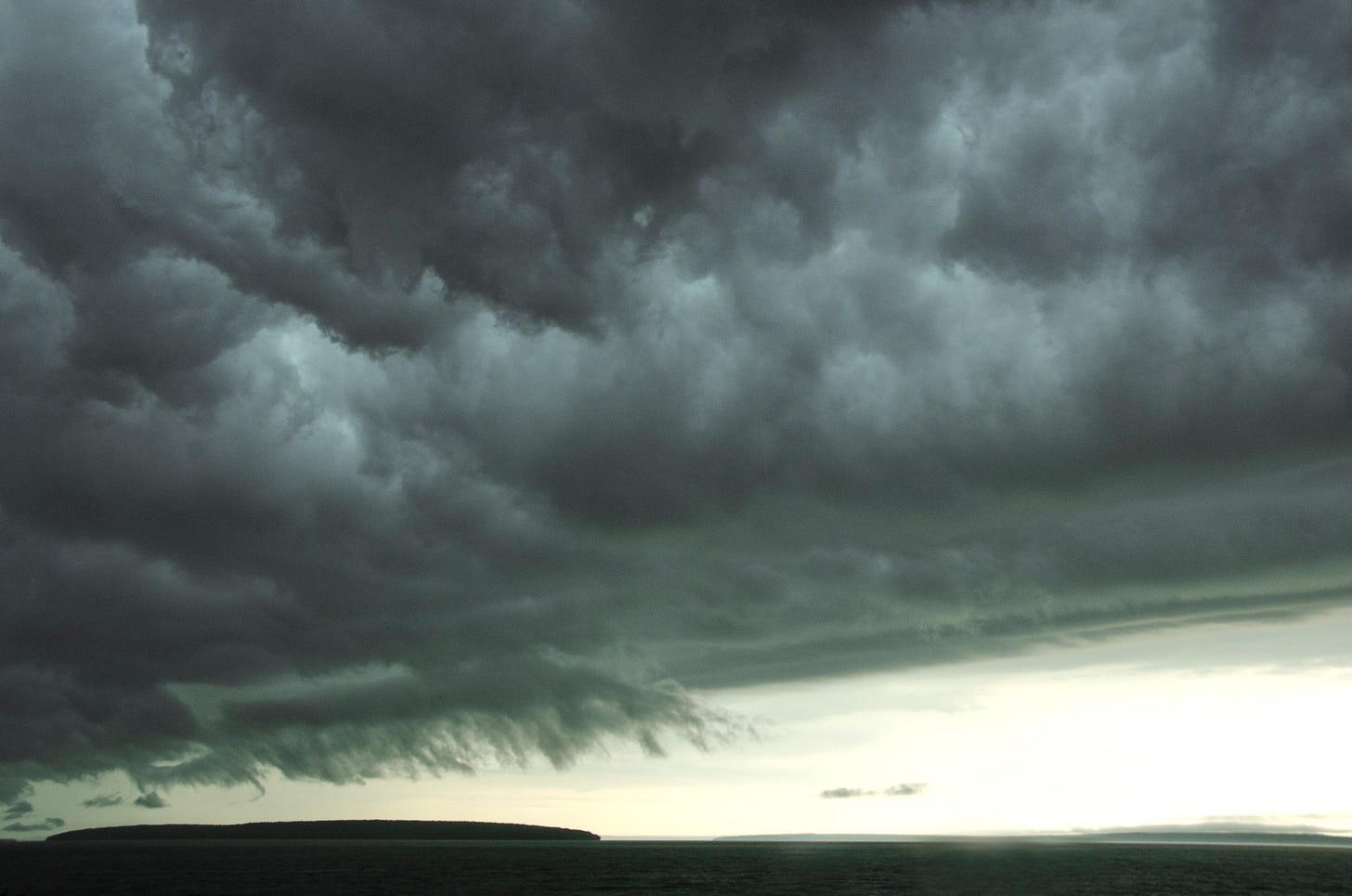
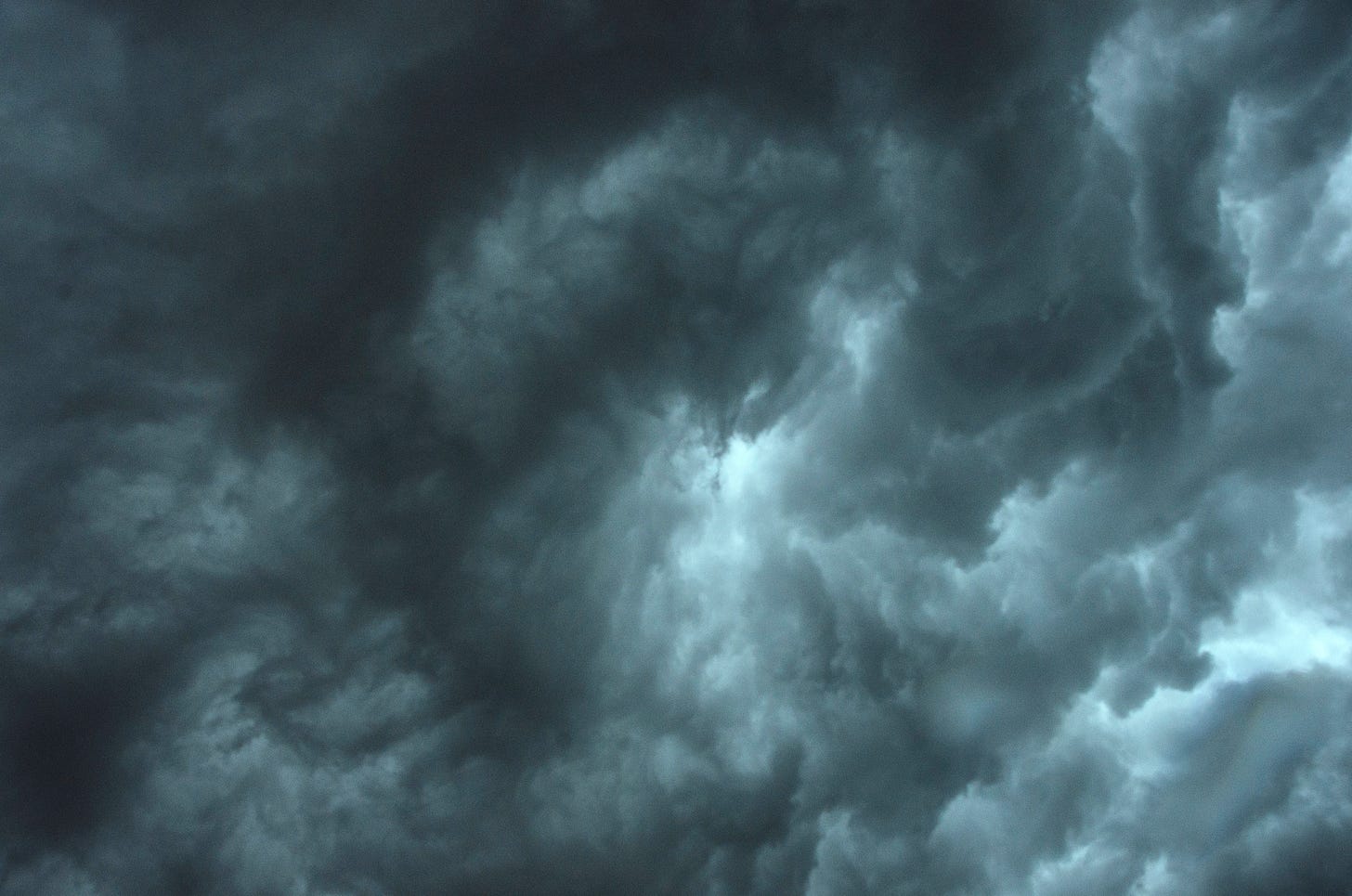
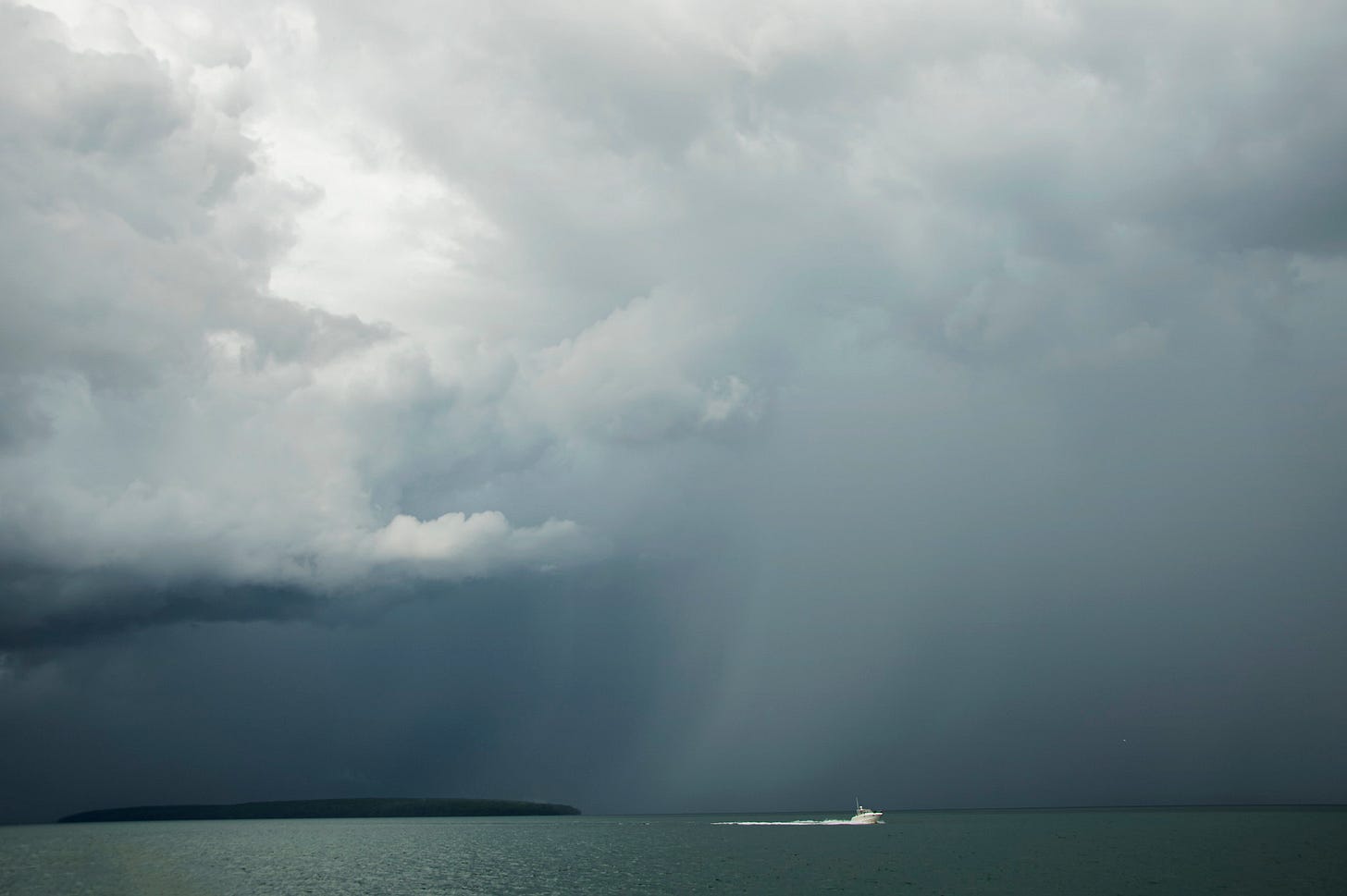
Wow! Your words and photographs capture the power and beauty of storms on the lake.
one of your best. Just returned from my yearly visit to the lake. Was reminded of the wild trip I took as a high school kid, a week on Stockton, and the storms that charged our hearts those days as we huddled in flimsy tents, waiting to be victim or vanquisher of the wind and rain.